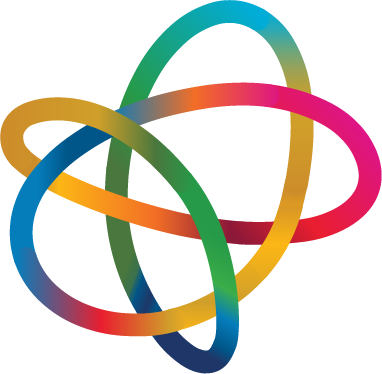Celebrating the First Century of Quantum Physics and Preparing for the Next One
A century ago, pioneering scientists, including Wolfgang Pauli, Werner Heisenberg, and Erwin Schrödinger, laid the foundational principles of quantum mechanics. To mark this milestone, the Editors of the Physical Review journals have curated a collection of landmark papers that shaped the field. The whole collection is accessible at this link.
The collection begins with the following editorial by Dagmar Bruß from Heinrich Heine University Düsseldorf.
Physical Review Letters’ Editorial
In this International Year of Quantum Science and Technology, we celebrate the centenary of quantum physics. The anniversary marks the theoretical developments—including Heisenberg’s and Schrödinger’s formulations of quantum mechanics—that swiftly unfolded starting in 1925, building on earlier seminal contributions that established essential quantum concepts [1–5].
One hundred years span about three human generations. Similarly, I view the last century of quantum physics as progressing through three consecutive but intertwined generations. The first quantum generation was an era of understanding and mysteries. The groundbreaking works of this period introduced a formal quantum-mechanical description of physical reality. At the same time, this era saw researchers trying to cope with the counterintuitive phenomena—including entanglement and the related nonlocality—resulting from the quantum formalism.
The second quantum generation was one of consolidation and applications. This era brought about the “first quantum revolution”—a series of technological breakthroughs that have made quantum effects a part of our daily lives. Lasers, magnetic resonance imaging, and integrated circuits are all examples of quantum-enabled technologies. Quantum theory also started to reshape fields such as chemistry, materials science, astrophysics, and cosmology. This period came with a gradual acceptance of the peculiar effects emerging in the quantum regime.
The characteristic feature of the third quantum generation is the link with information science. Having come to terms with quantum weirdness, scientists realized that the quantum world has great, inherent power for quantum information processing. Harnessing the quantum laws of nature, they devised ways to perform computing, communication, simulation, and sensing with unmatched efficiency and security. Efforts to implement these disruptive technologies lie at the heart of contemporary research.
This collection brings together papers playing a foundational role within each of these three quantum generations. In the first generation, the development of the theory [6–17] went hand in hand with the discussion of doubts, paradoxes, and possible interpretations of quantum mechanics [18–22].
During the second quantum generation, pioneering contributions included insights into topological effects [23,24], as well as the conception of experiments for proving debated quantum-mechanical properties such as nonlocality [25–27], contextuality [28], and particle-wave duality [29]. These ideas were successfully tested in experiments when suitable technology became available [30–34].
The third quantum generation was opened up by papers that built the foundations of quantum information science. The “no-cloning theorem” [35] showed the possibility of achieving unbreakable security in quantum communication [36]. Other landmark papers pointed out the possibility of building a universal quantum computer [37] and of achieving a quantum computing advantage in practical applications [38]. In parallel to quantum information science, foundational research started to pursue new and alternative directions [39].
As we enter a new century of quantum science, we wonder how disruptive quantum information technologies will be, and on what timescales their full impact will be felt. But future quantum research will need to tackle much more than technology development. After 100 years of quantum mechanics, several fundamental issues remain partially or fully unresolved. Can we understand the boundary between the quantum and the classical world? How can the laws of classical thermodynamics emerge from quantum mechanics? Can gravity be quantized, and how can experiments look for signatures of quantum gravity? Many more questions will arise that we cannot even imagine today.
Certainly, research on foundational aspects of quantum physics will be as necessary in the future as it was in its first century. And as history has amply shown, so-called “quantum leaps” in technology are by and large the fruit of fundamental advances.
References (39)
- Max Planck, Ueber das Gesetz der Energieverteilung im Normalspectrum, Ann. Phys. (Berlin) 309, 553 (1901).
- Albert Einstein, Über einen die Erzeugung und Verwandlung des Lichtes betreffenden heuristischen Gesichtspunkt, Ann. Phys. (Berlin) 322, 132 (1905).
- Niels Bohr, On the constitution of atoms and molecules, Philos. Mag. Ser. 5 26, 1 (1913).
- Walther Gerlach and Otto Stern, Der experimentelle Nachweis der Richtungsquantelung im Magnetfeld, Z. Phys. 9, 349 (1922).
- Arthur Compton, A quantum theory of the scattering of x-rays by light elements, Phys. Rev. 21, 483 (1923).
- Wolfgang Pauli, Über den Einfluß der Geschwindigkeitsabhängigkeit der Elektronenmasse auf den Zeemaneffekt, Z. Phys. 31, 373 (1925).
- Werner Heisenberg, Über quantentheoretische Umdeutung kinematischer und mechanischer Beziehungen, Zeitschrift für Physik 33, 879 (1925); M. Born and P. Jordan, Zur Quantenmechanik, Z. Phys. 34, 858 (1925); M. Born, W. Heisenberg, and P. Jordan, Zur Quantenmechanik. II., 35, 557 (1925).
- Louis de Broglie, Recherches sur la théorie des Quanta, Ann. Phys. (Berlin) 10, 22 (1925).
- George E. Uhlenbeck and Samuel Goudsmit, Ersetzung der Hypothese vom unmechanischen Zwang durch eine Forderung bezüglich des inneren Verhaltens jedes einzelnen Elektrons, Zuschriften Und Vorläufige Mitteilungen 13, 953 (1925).
- Erwin Schrödinger, Quantisierung als Eigenwertproblem, Ann. Phys. (Berlin) 384, 361 (1926).
- Clinton Davisson and Lester H. Germer, Diffraction of electrons by a crystal of nickel, Phys. Rev. 30, 705 (1927).
- Max Born, Das Adiabatenprinzip in der Quantenmechanik, Z. Phys. 40, 167 (1927).
- Paul A. M. Dirac, The quantum theory of the electron, Proc. R. Soc. A 117, 610 (1928).
- Howard P. Robertson, The uncertainty principle, Phys. Rev. 34, 163 (1929).
- Felix Bloch, Über die Quantenmechanik der Elektronen in Kristallgittern, Z. Phys. 52, 555 (1929).
- Richard P. Feynman, Space-time approach to non-relativistic quantum mechanics, Rev. Mod. Phys. 20, 367 (1948).
- Julian Schwinger, On gauge invariance and vacuum polarization, Phys. Rev. 82, 664 (1951).
- Albert Einstein, Boris Podolsky, and Nathan Rosen, Can quantum-mechanical description of physical reality be considered complete?, Phys. Rev. 47, 777 (1935).
- Niels Bohr, Can quantum-mechanical description of physical reality be considered complete?, Phys. Rev. 48, 696 (1935).
- Erwin Schrödinger, Die gegenwärtige Situation in der Quantenmechanik, Naturwissenschaften 23, 807 (1935).
- David Bohm, A suggested interpretation of the quantum theory in terms of “hidden” variables. I, Phys. Rev. 85, 166 (1952).
- Hugh Everett, Relative state formulation of quantum mechanics, Rev. Mod. Phys. 29, 454 (1957).
- Yakir Aharonov and David Bohm, Significance of electromagnetic potentials in the quantum theory, Phys. Rev. 115, 485 (1959).
- Michael V. Berry, Quantal phase factors accompanying adiabatic changes, Proc. R. Soc. A 392, 45 (1984).
- John S. Bell, On the Einstein Podolky Rosen paradox, Phys. Phys. Fiz. 1, 195 (1964).
- Daniel M. Greenberger, Michael A. Horne, Abner Shimony, and Anton Zeilinger, Bell’s theorem without inequalities, Am. J. Phys. 58, 1131 (1990).
- Lucien Hardy, Nonlocality for two particles without inequalities for almost all entangled states, Phys. Rev. Lett. 71, 1665 (1993).
- Simon Kochen and Ernst Specker, The problem of hidden variables in quantum mechanics, J. Math. Mech. 17, 59 (1967).
- John A. Wheeler, The “past” and the “delayed-choice” double-slit experiment, Mathematical Foundations of Quantum Theory, edited by A. R. Marlow (Academic Press, New York, 1978), pp. 9–48, 10.1016/B978-0-12-473250-6.X5001-8.
- Stuart J. Freedman and John F. Clauser, Experimental test of local hidden-variable theories, Phys. Rev. Lett. 28, 938 (1972).
- Alain Aspect, Jean Dalibard, and Gérard Roger, Experimental test of Bell’s inequalities using time-varying analyzers, Phys. Rev. Lett. 49, 1804 (1982).
- X. Y. Zou, L. J. Wang, and L. Mandel, Induced coherence and indistinguishability in optical interference, Phys. Rev. Lett. 67, 318 (1991).
- Vincent Jacques, E Wu, Frédéric Grosshans, François Treussart, Philippe Grangier, Alain Aspect, and Jean-François Roch, Experimental realization of Wheeler’s delayed-choice gedanken experiment, Science 315, 966 (2007).
- B. Hensen et al., Loophole-free Bell inequality violation using electron spins separated by 1.3 kilometres, Nature (London) 526, 682 (2015); Marissa Giustina et al., Significant-loophole-free test of Bell’s theorem with entangled photons, Phys. Rev. Lett. 115, 250401 (2015); Lynden K. Shalm et al., Strong loophole-free test of local realism, 115, 250402 (2015).
- William K. Wootters and Wojciech H. Zurek, A single quantum cannot be cloned, Nature (London) 299, 802 (1982).
- Charles H. Bennett and Gilles Brassard, Quantum cryptography: Public key distribution and coin tossing, Proceedings of the International Conference on Computers, Systems & Signal Processing (1984), Vol. 1, pp. 175–179.
- David Deutsch, Quantum theory, the Church–Turing principle and the universal quantum computer, Proc. R. Soc. A 400, 97 (1985).
- Peter W. Shor, Algorithms for quantum computation: Discrete logarithms and factoring, Proceedings 35th Annual Symposium on Foundations of Computer Science, Santa Fe, NM (1994), pp. 124–134; L. K. Grover, Quantum mechanics helps in searching for a needle in a haystack, Phys. Rev. Lett. 79, 325 (1997).
- Sandru Popescu and Daniel Rohrlich, Quantum nonlocality as an axiom, Found. Phys. 24, 379 (1994).
Featured image: Niels Bohr and Albert Einstein. Wikipedia, public domain.
For general questions about IYQ, please contact info@quantum2025.org. For press inquiries, contact iyq2025@hkamarcom.com.


